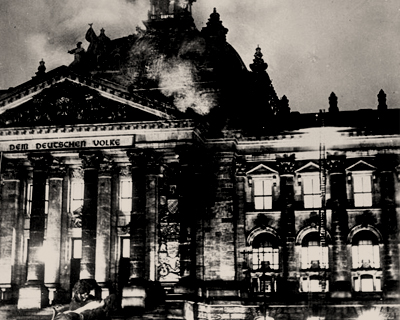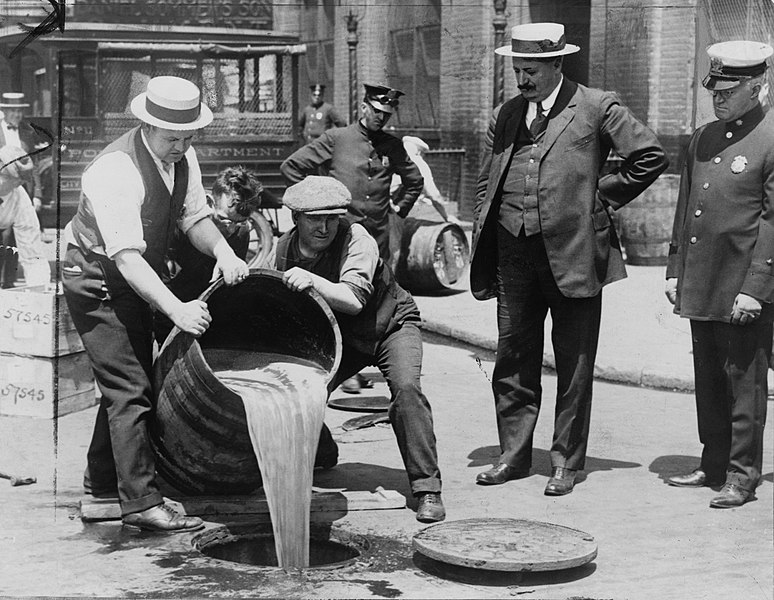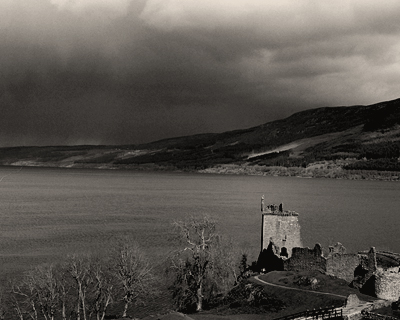Hitler and von Hindenburg. German Federal Archives / Wikimedia Commons / CC-BY-SA-3.0 / GFDL
1 – Hitler Becomes Chancellor, Reichstag Fire & Nazi Terror Begins
The Reichstag fire was an arson attack on the Reichstag building in Berlin on 27 February 1933.
Marinus van der Lubbe, a young Dutch communist, was caught at the scene of the fire and arrested for the crime.
Van der Lubbe was an unemployed bricklayer who had recently arrived in Germany. He declared that he started the fire, was tried and sentenced to death.
The fire was used as evidence that communists were plotting against the German government. It is seen as pivotal in the establishment of Nazi Germany.

Adolf Hitler, who had been sworn in as Chancellor of Germany on 30 January, urged President Paul von Hindenburg to pass an emergency decree to suspend civil liberties in order to counter the ruthless confrontation of the Communist Party of Germany.
After passing the decree, the government instituted mass arrests of Communists, including all of the Communist Party parliamentary delegates.
With their bitter rival communists gone and their seats empty, the Nazi Party went from being a plurality party to the majority, thus enabling Hitler to consolidate his power.
The responsibility for the Reichstag fire remains an ongoing topic of debate and research.
Historians disagree as to whether van der Lubbe acted alone, or whether the arson was planned and ordered by the Nazis as a false flag operation.
2 – Prohibition Repealed in the U.S.

In 1932 the Democratic Party’s platform included repeal of Prohibition, and Democratic candidate Franklin D. Roosevelt ran for president of the United States promising repeal of federal Prohibition laws.
The Cullen–Harrison Act, signed by President Franklin D. Roosevelt on March 22, 1933, authorized the sale of 3.2 percent beer (thought to be too low an alcohol concentration to be intoxicating) and wine.
This allowed the first legal beer sales since the beginning of Prohibition on January 16, 1920.
The Amendment was fully ratified on December 5, 1933. Federal laws enforcing Prohibition were then repealed.
Following repeal, some states continued prohibition within their own jurisdictions. For a time, 38 percent of Americans lived in areas with Prohibition.
By 1966, however, all states had repealed their statewide prohibition laws, with Mississippi the last state to do so.
3 – Loch Ness Monster is First Reportedly Sighted

The Loch Ness Monster is an aquatic being, described by most as large, which reputedly inhabits Loch Ness in the Scottish Highlands.
Popular interest and belief in the creature have varied since it was brought to worldwide attention in 1933, though legends of it go back 1,500 years.
Evidence of its existence is anecdotal, with few, disputed photographs and sonar readings.
The most common speculation among believers is that the creature represents a line of long-surviving plesiosaurs.
The scientific community regards the Loch Ness Monster as a myth, explaining sightings as misidentifications of mundane objects, hoaxes, and wishful thinking.
The creature has been affectionately called Nessie since the 1940s.
